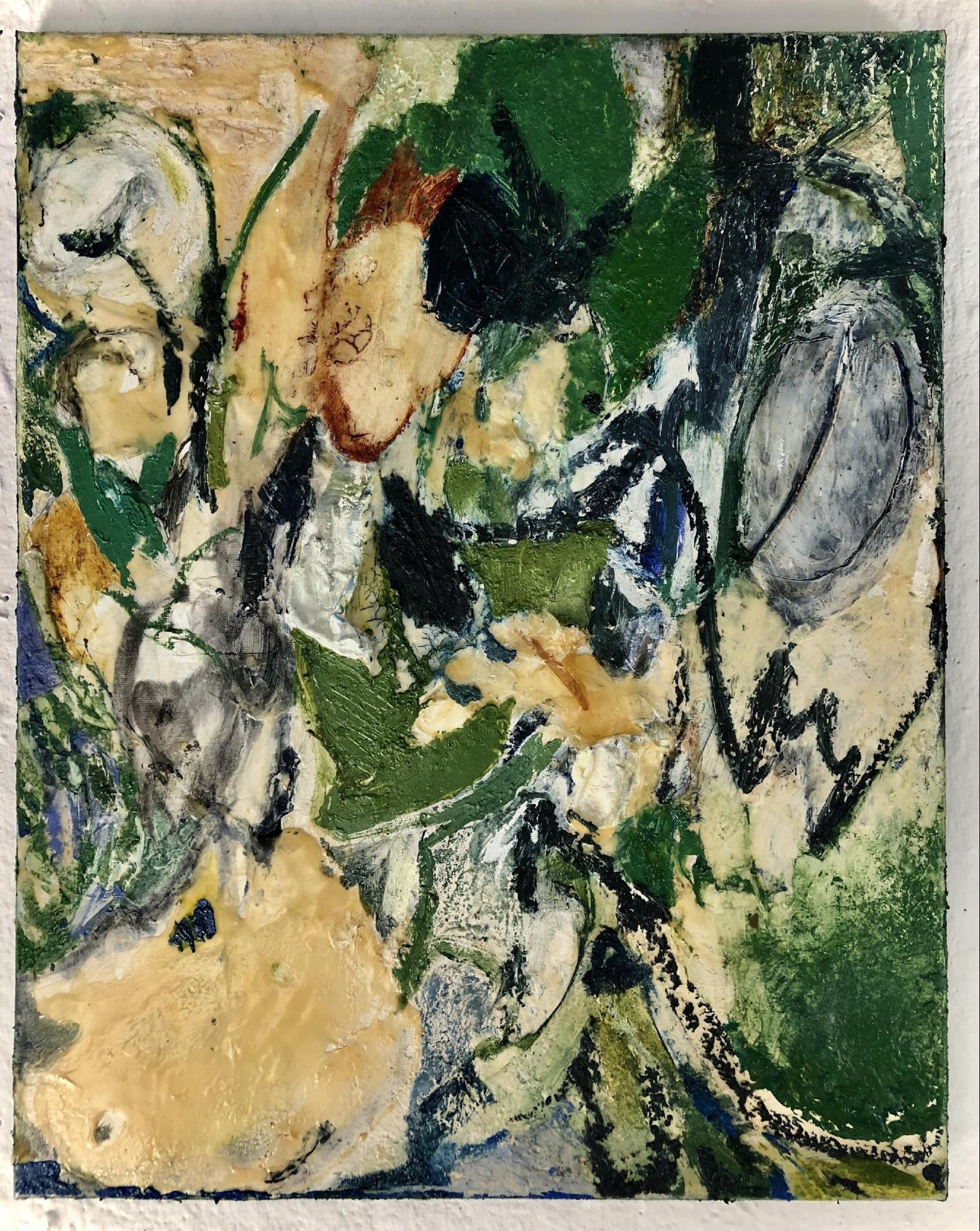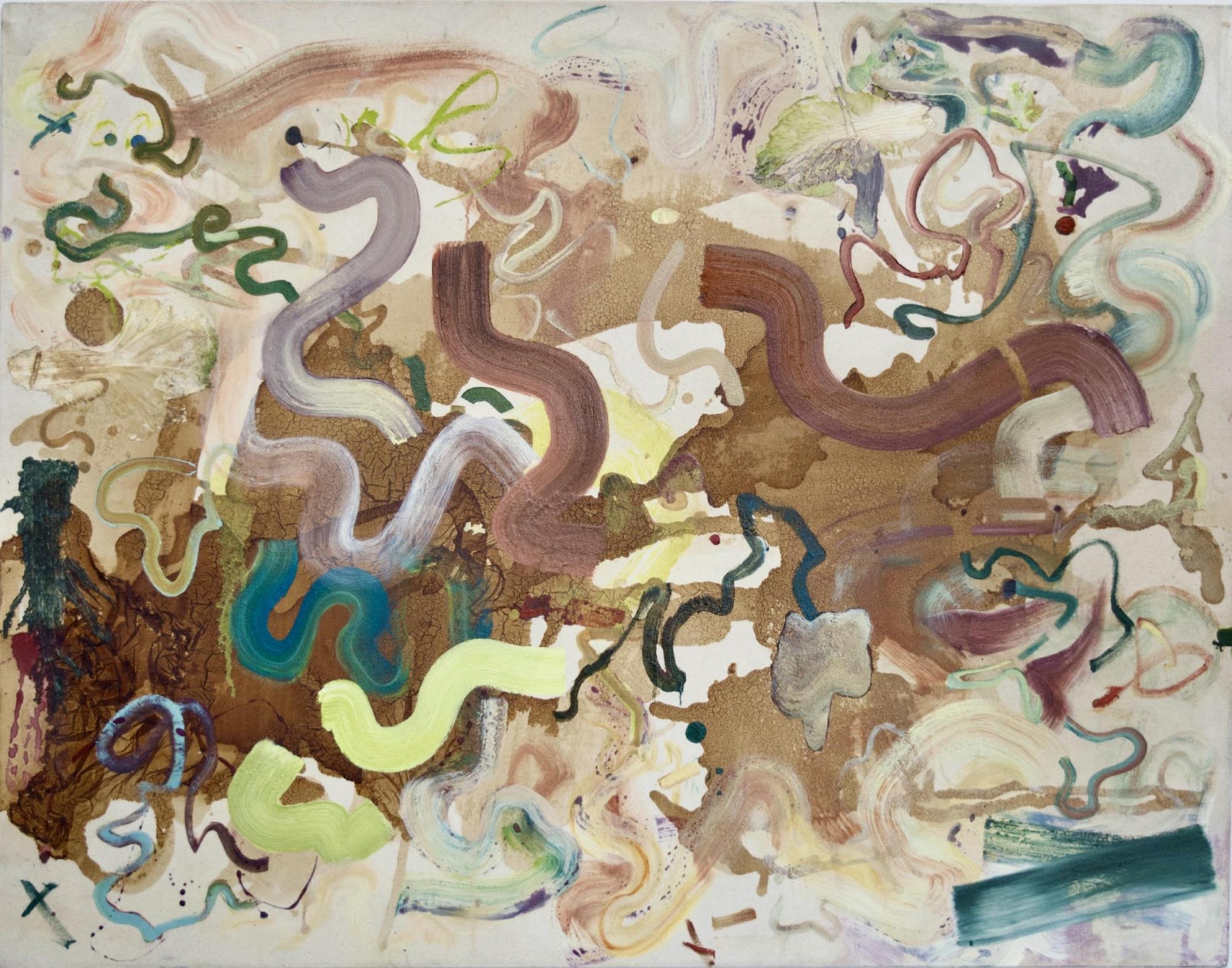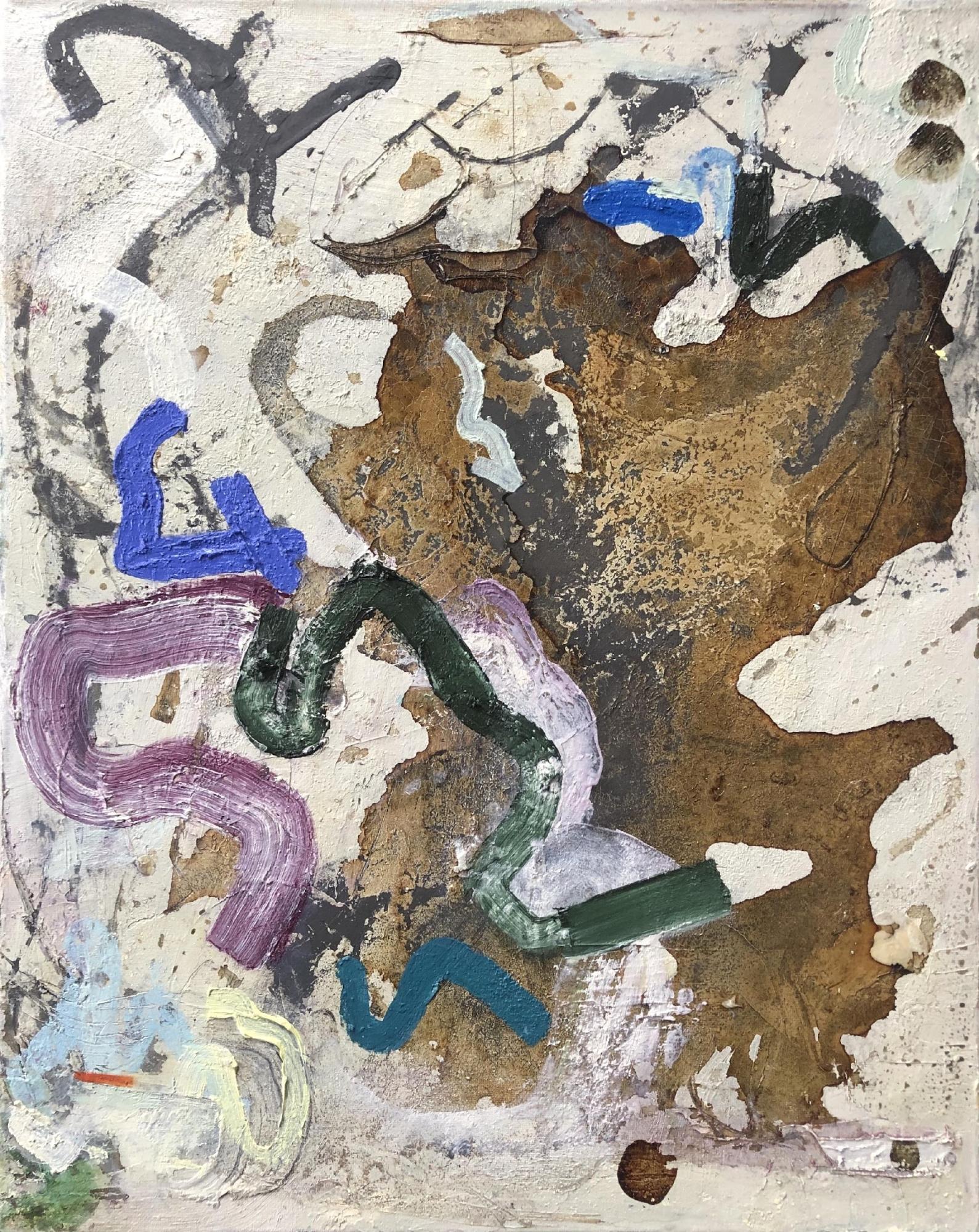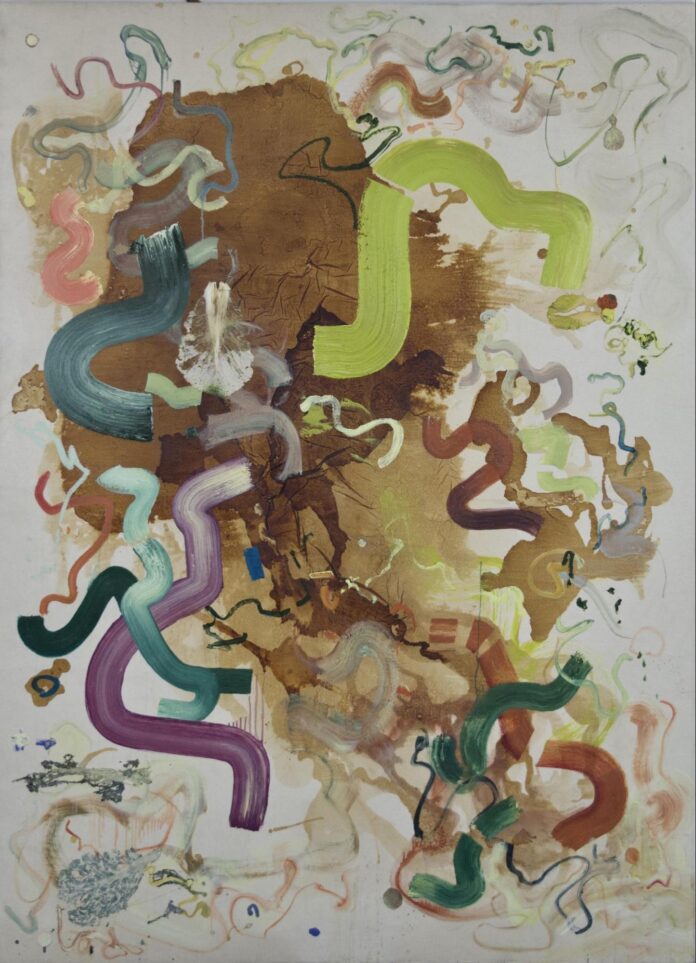In a contemporary art landscape often driven by interpretation, clarity, and symbolic capital, Ruoyu Zhang’s work offers a compelling counterpoint. Her practice unfolds not through narrative construction, but through gestures that vibrate—marks that do not seek to communicate, but to resonate. Working between painting, printmaking, performance, and ecological thinking, Zhang constructs what she calls “asemic ecologies”: rhythmic constellations of language, matter, and body that do not speak in words, but in atmospheres.
Born in Chongqing in 1999 and educated at the Rhode Island School of Design, Zhang draws upon diverse conceptual lineages—material ecocriticism, posthumanism, asemic art, biodynamic agriculture—to articulate an artistic language that is less about symbolic meaning and more about relational presence. At the heart of her practice lies an ongoing engagement with asemic writing, a form of mark-making that suspends semantic intention and foregrounds the gesture of writing itself. “Asemic writing,” she notes, “does not attempt to communicate any message other than its own nature as writing, which is a shadow, an impression, and an abstraction.” Yes, asemic writing is not meaningless—it is meaning deferred, dispersed, translated into rhythm and form.

Mixed media on canvas
20 x 15 inches
Zhang’s artworks operate as sites of negotiation between material agency and perceptual ambiguity. In her recent exhibitions, Collective Marks and Strokes of Imagination and Collective II, two major pieces—butterfly and Celestial Kinship #2—embody different stages of this unfolding language. Butterfly is spontaneous and intuitive, a raw dance of line and color that hovers between abstraction and recognition. Celestial Kinship #2, in contrast, is more refined: a layered field of asemic scores where visual rhythm, ecological texture, and bodily inscription converge into a shared poetic structure. These works mark a transition—from expressive authorship toward a form of co-composition where pigment, gesture, and environment write together.
Zhang’s distinct contribution to contemporary art lies in her ability to bridge rigorous theoretical frameworks with a materially grounded practice, in which her choice of substances embodies both tactile complexity and cultural memory. Substances such as wine, coffee, cochineal, and soil are not just pigments; they are time-bearing entities, embedded with processes of fermentation, decay, and transformation. Informed by biodynamic philosophy, she treats matter not as medium, but as co-agent. These substances behave, resist, participate. They crack, bleed, settle. And in doing so, they speak—not in words, but in pulses, temperatures, and durational rhythms.

Oil, natural wine, cochineal insects, coffee, napa cabbage on canvas
54 x 42 inches
“These materials perform in the work as much as I do,” Zhang explains. “They are alive, porous.”

oil, coffee, charcoal, coco coir on canvas
20 x 15 inches
This approach resonates with the theoretical frameworks of material ecocriticism and posthumanist thought. Zhang treats language, nature, and the body not as separate domains but as entangled participants in a shared ecology. As material ecocritic Serenella Iovino writes, “The world we write in is the same world we decay within.” In Zhang’s practice, this idea becomes tactile: cracks and sediment become text; surface tension becomes syntax. Her asemic scores, then, are not anti-linguistic but trans-linguistic—modes of writing that do not point to a referent, but instead immerse the viewer in an experience of affective language beyond language.
Her paintings function less as compositions and more as sites of attunement, where the viewer is asked not to interpret but to resonate—entering rhythm rather than decoding symbol. As she puts it: “The viewer is not a reader, but a resonator”—a body invited into rhythm rather than meaning. This shift—from deciphering to sensing—suggests a broader philosophical gesture: a refusal of linguistic mastery, and a reconfiguration of authorship as ecological participation.
Her conceptual rigor is matched by a refined aesthetic sensibility. Each mark in Zhang’s work carries both the immediacy of gesture and the weight of accumulated time. Her compositions do not demand understanding; they invite presence. In doing so, Zhang contributes a powerful voice to the discourse on post-linguistic art, offering an alternative to anthropocentric authorship and challenging the boundaries of language, sensation, and matter.

Oil, coffee, resin, birch concentrate, on canvas
16 x 21 inches
In a cultural moment increasingly shaped by legibility and algorithmic readability, Zhang’s asemic ecologies offer something vital: a space for slowness, for ambiguity, for sensation that exceeds clarity. Through rhythm, material, and untranslatable attention, she composes a living poetics—one that entangles human and nonhuman, text and texture, language and breath.

